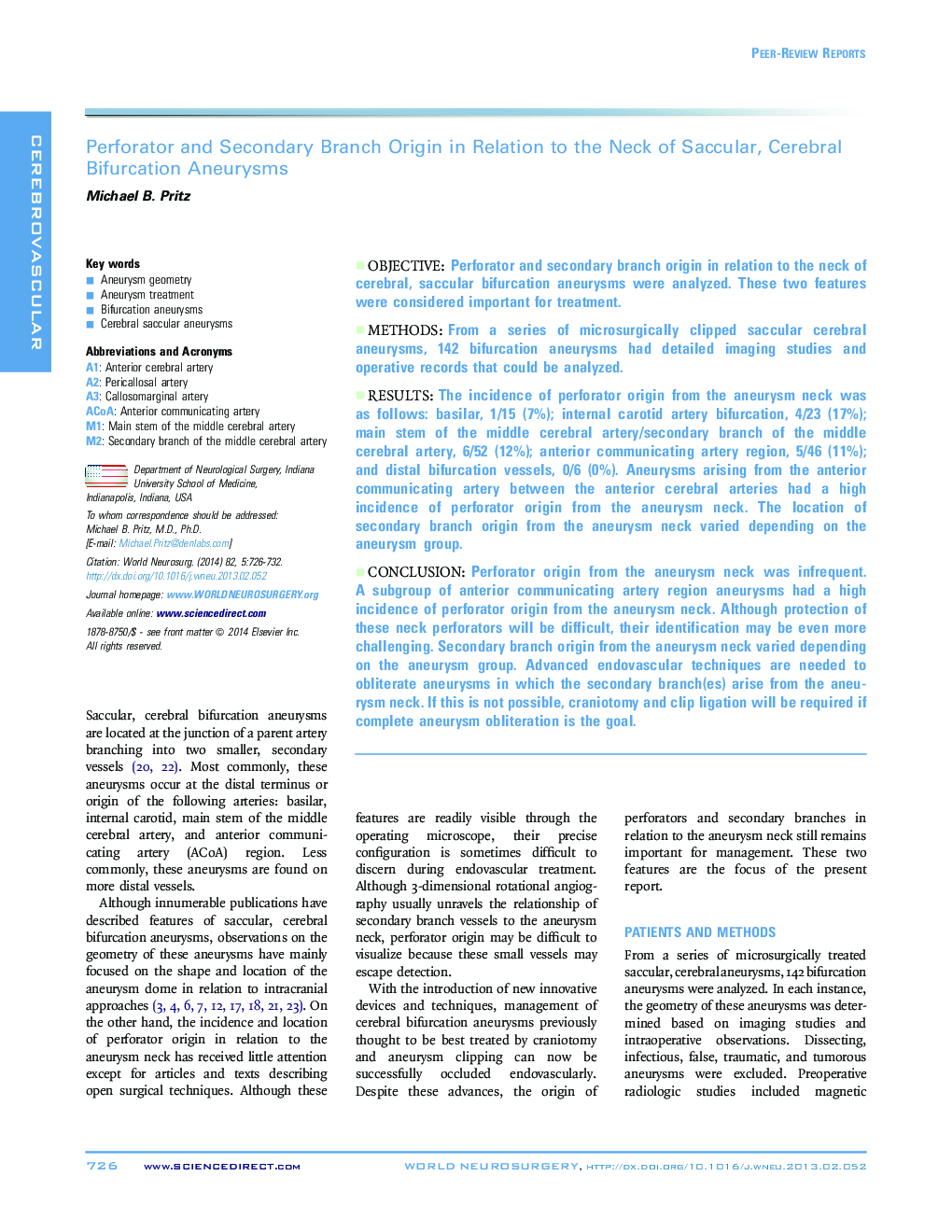| Article ID | Journal | Published Year | Pages | File Type |
|---|---|---|---|---|
| 3095319 | World Neurosurgery | 2014 | 7 Pages |
ObjectivePerforator and secondary branch origin in relation to the neck of cerebral, saccular bifurcation aneurysms were analyzed. These two features were considered important for treatment.MethodsFrom a series of microsurgically clipped saccular cerebral aneurysms, 142 bifurcation aneurysms had detailed imaging studies and operative records that could be analyzed.ResultsThe incidence of perforator origin from the aneurysm neck was as follows: basilar, 1/15 (7%); internal carotid artery bifurcation, 4/23 (17%); main stem of the middle cerebral artery/secondary branch of the middle cerebral artery, 6/52 (12%); anterior communicating artery region, 5/46 (11%); and distal bifurcation vessels, 0/6 (0%). Aneurysms arising from the anterior communicating artery between the anterior cerebral arteries had a high incidence of perforator origin from the aneurysm neck. The location of secondary branch origin from the aneurysm neck varied depending on the aneurysm group.ConclusionPerforator origin from the aneurysm neck was infrequent. A subgroup of anterior communicating artery region aneurysms had a high incidence of perforator origin from the aneurysm neck. Although protection of these neck perforators will be difficult, their identification may be even more challenging. Secondary branch origin from the aneurysm neck varied depending on the aneurysm group. Advanced endovascular techniques are needed to obliterate aneurysms in which the secondary branch(es) arise from the aneurysm neck. If this is not possible, craniotomy and clip ligation will be required if complete aneurysm obliteration is the goal.
